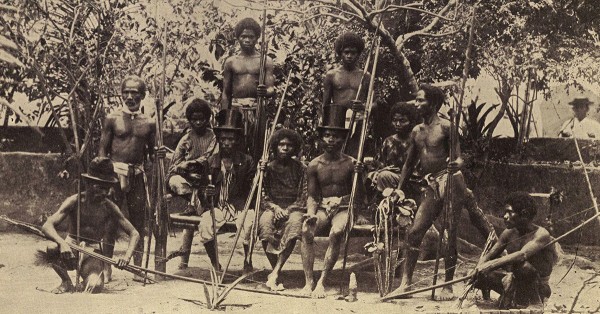The Philippines are best known in the West for the stick fighting styles Eskrima, Arnis and Kali. The techniques used are largely based on the sword-fighting of indigenous tribes. But the pre-modern warriors of the island empire also mastered other weapons. The archers were particularly feared.
Virtually all tribes of the Philippines used bows and arrows as weapons. Relatively short bows were usually used for hunting or fishing. Their tips were made of iron, palm wood or bamboo. But archers also fought rival tribes. Their war bows were usually longer than the hunting bows. Often they towered over the shooter. They were held vertically and placed on the floor with the lower end. The shooter pulled the string with his fingers and was thus able to achieve a high level of accuracy.
Archers in the service of the colonial power
During the colonial period, many tribes were forced to fight on the Spanish side. In 1578, Governor Francisco de Sande assembled an army in Manila to attack the southern island of Borneo. About 1,500 Filipino archers from the main island Luzon and the Visayas also participated in this expedition. The campaign, which was carried out with great effort, achieved its goal: the Sultan of Brunei had to bow to the Spanish crown and became a vassal.
Over time, the different tribes of the Philippines developed very different bow models. They varied in shape and size of the components as well as in the materials used. Also the technique of shooting differed from island to island. The indigenous people, called "Negritos" by the Spaniards because of their dark skin, perfected the use of iron points. They often equipped their arrows with barbs that were as refined as they were brutal.
The Muslim "Moros" in the south even used poisoned arrows. They made their bows from the exceptionally smooth wood from the heart of the palm tree. These bows were polished for hours with coconut oil to make them fine and flexible. Some Moro tribes domesticated horses and rode them in battle. The long bows could not be shot from the horse's back. Nevertheless, the warriors did not develop shorter bows like the American natives. They kept shooting their arrows in a standing position.
An almost forgotten tradition
At the end of the 17th century, the Italian adventurer Giovanni Francesco Gemelli Careri visited the Philippines. In his recollections, the world traveller described the inhabitants of the Zambales region in the north of the main island Luzon. The warriors carried not only spears and knives but also longbows as weapons. Their war bows had arrowheads made of stone. These were drilled so that they shattered in the body. That's why they tore terrible wounds. In the tropical climate, life-threatening infections could develop quickly. Even a supposedly harmless hit could lead to painful death.
The American soldiers in the Philippine-American War from 1899 to 1902 also had to realize this. In the jungle, many Filipinos continued to use arrows and blowpipes. In the end, however, they could not win against the overwhelming army. In the course of the twentieth century most traditions of archery disappeared. Some of them have been completely forgotten. An exception are the Aeta in the northern Zambales region. The tribe, which is regarded as part of the Negrito, preserves the traditional art of bow making and shooting in many facets. However, today they only use their bows for hunting animals.
Photo: Negrito archers by the end of the 19th century
aus: Alden March: The History and Conquest of the Philippines and Our Other Island Possessions, Philadelphia 1899


